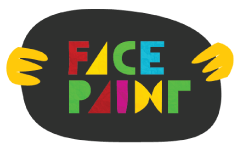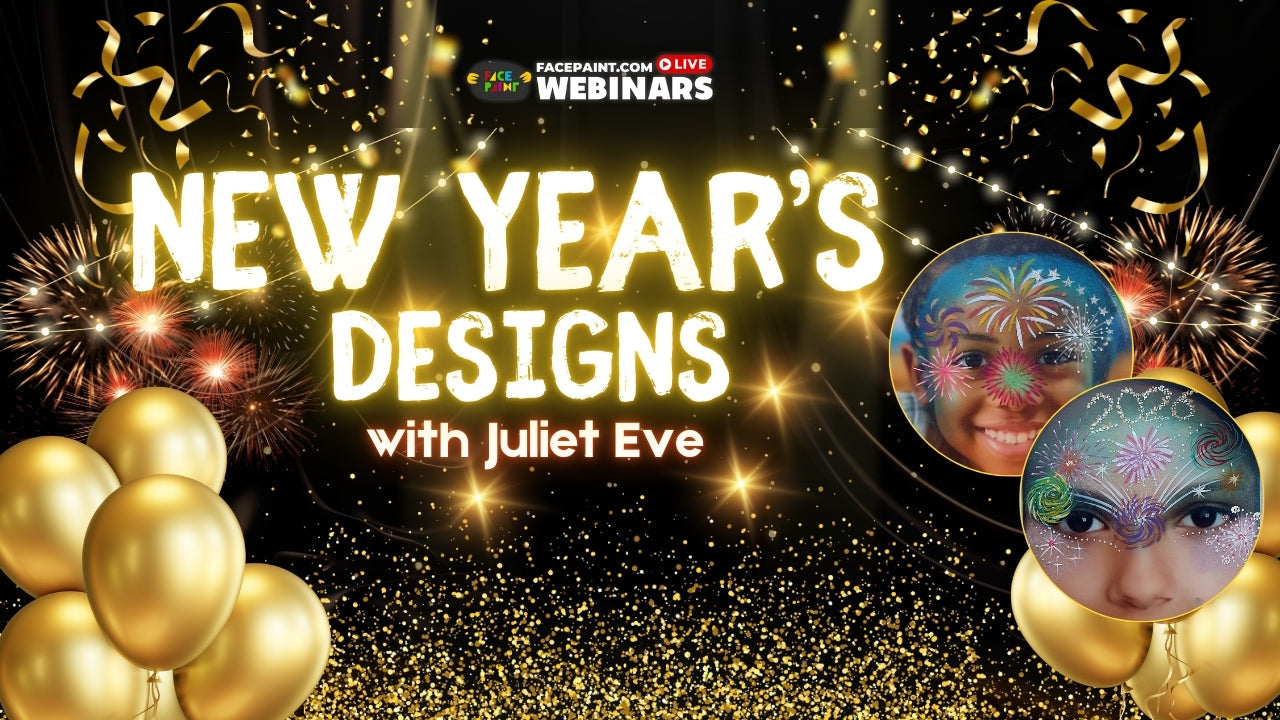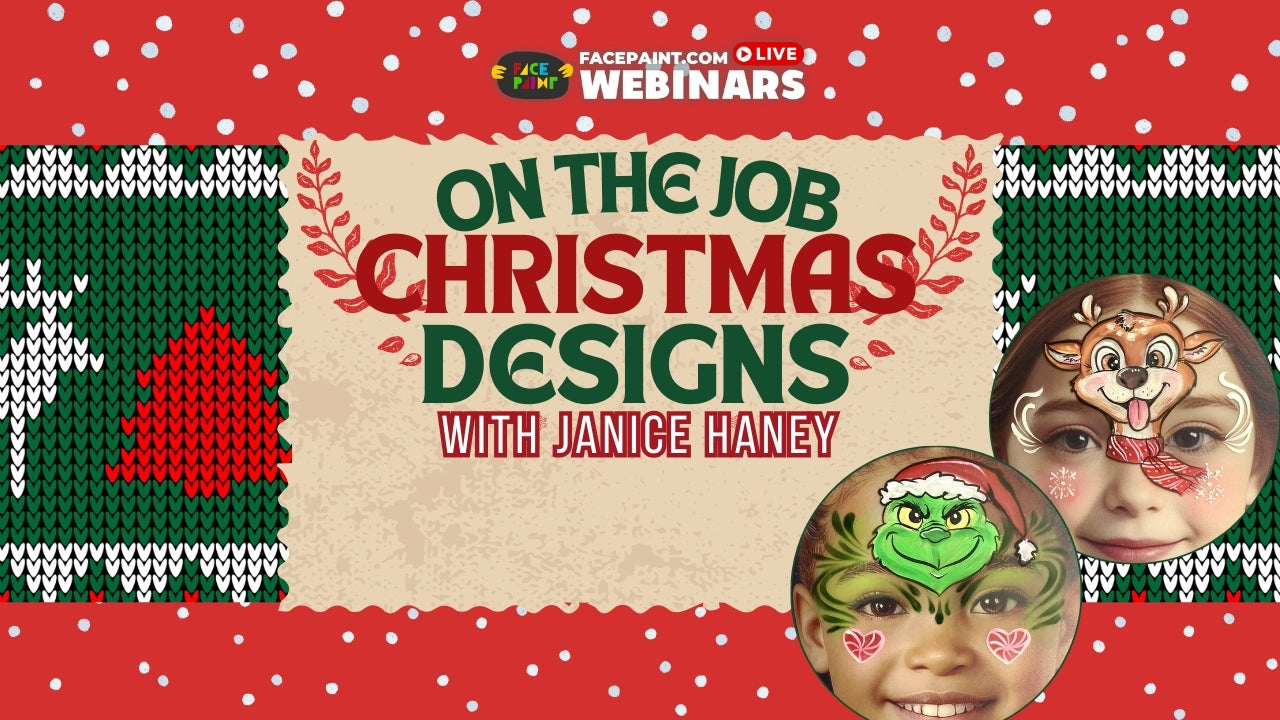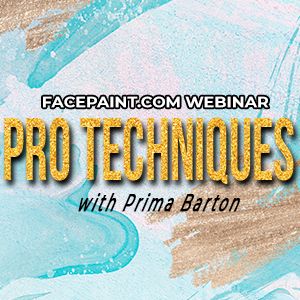Ready to add an elegant twist to your Halloween face painting repertoire? Join us as we explore the beautiful world of Halloween florals with internationally recognized artist Wies Geluk-van Veen, who brings her unique psychological perspective and artistic passion to create stunning spooky botanical designs.
About the Artist
Wies Geluk-van Veen began her career as a psychologist but always harbored a deep passion for drawing, painting, and creative expression. While living abroad in Germany, she rediscovered her artistic calling through face painting and hasn't looked back since. Known especially for her distinctive floral designs, Wies combines technical precision with natural, flowing artistry that transforms faces into living canvases. Her son even created a special practice board just for this workshop – talk about family support!
Featured Products
Throughout this webinar, Wies demonstrates with several professional-grade products that help achieve these stunning Halloween floral effects:
-
Brushes: liner brush by sparkling faces; 1/2 & 3/8
angled brush by Aliyah; number 4 round brush by sparkling faces for the spiderwebs. -
Paint: line white and black by PXP Peter Tronser edition; purple and black around the eyes by mehron; sparkling purple in the sugar skull design by superstar metallic lavender;
-
Onestrokes: design bloody roses: grey roses with black, grey and white onestroke from the pxp palette basic lines; Cameleon chaotic flower adjusted with rodeo red of GTX for the red leaves; a homemade onestroke with black, sangria (gtx), plum (superstar) and Bollywood pink (cameleon) for the darker leaves and woodgreen by pxp for the ghost leaves.
-
Design: web of flowers: home made onestroke made of plum (superstar), Bollywood pink (cameleon), orange (superstar) and line white (pxp); leaves with black, fresh green and white.
-
Design: purple sugar: Purple Haze by Cameleon adjusted so the white is directly next to the darker purple; Cameleon Autumn for the flower centers; black, woodgreen and white by pxp for leaves.
Design 1: Bloody Roses Eye Design
Creating the Foundation
Wies starts her first design by establishing a dramatic base around the eye area. Using a dabber on her practice board, she creates a blood-tinted backdrop that sets the Halloween mood. This technique works beautifully on real faces too – just switch to a butterfly sponge for smoother application on skin.
Mastering Rose Placement
The secret to compelling floral designs lies in strategic placement. Wies positions her largest rose on the cheek's highest point, creating a natural focal point. She emphasizes the importance of directing flowers toward facial focal points – either the chin or the area between the eyebrows. This creates visual flow that enhances the face's natural structure.
The Layering Technique
Here's where Wies shares a game-changing tip: patience between layers. "When you paint flowers, one of the most important things is to let the layers dry before you paint over them," she explains. Rather than waiting idle, she moves to different elements of the design – leaves, outlines, or details – maximizing efficiency without sacrificing quality.
Professional Rose Painting Method
Using her favorite half-inch angled brush, Wies demonstrates her relaxed approach to painting roses. She moves the brush along the one-stroke, creating darker base petals and lighter top layers for stunning 3D effects. Her constant lifting motion makes the process easier and more natural than traditional techniques. "I don't like to stress out a lot when I'm painting," she shares, making this method perfect for both beginners and pros.
Ghost Technique Innovation
While ghost technique traditionally uses black or white, Wies innovates with PXP Wood Green for her leaves. After activating the paint (never too wet!), she creates ethereal leaf outlines that add depth without overwhelming the design. This technique fills empty spaces while maintaining the design's elegant Halloween aesthetic.
The Finishing Touch: Blood Drops
To transform elegant roses into Halloween art, Wies adds delicate blood drops using GTX Rodeo Red. Starting with thin lines that end in teardrop shapes, she later adds white highlights for dimensional effect. It's these details that elevate the design from pretty to perfectly spooky.
Design 2: Spider Web Florals
Color Theory for Halloween
Wies demonstrates how purple and orange create the perfect Halloween palette. She custom-mixes her one-strokes for maximum contrast, combining black and green with white for leaves that pop against the skin. "I love harsh or hard contrast in flowers," she notes, explaining how intense color combinations prevent designs from looking washed out.
Alternative Flower Styles
"Roses are not the only flowers that exist," Wies reminds us as she demonstrates simpler flower techniques. Using small brush movements and strategic lifting, she creates flowers with intentional gaps between petals. These spaces aren't mistakes – they're what make the flowers interesting and natural-looking.
Web Construction Fundamentals
The spider web background requires precision and understanding of facial structure. Starting with thick lines that thin to points, Wies directs web strands toward facial focal points. She deliberately leaves some lines unconnected, creating asymmetrical patterns that look more organic and intriguing than perfect geometry.
Layering Elements Effectively
Wies carefully paints the web to appear behind the flowers, never crossing through leaves or petals. This creates depth and ensures the flowers remain the star while the web provides atmospheric Halloween context. A small spider with eight legs (accuracy matters!) completes the scene.
Design 3: Floral Sugar Skull
Quick Skull Foundation
Working efficiently, Wies creates the skull base with oval eye shapes and the characteristic nose design. She adds Superstar Lavender Shimmer for a feminine touch that catches the light beautifully – proof that Halloween designs don't have to sacrifice elegance for spookiness.
Strategic Flower Placement
Using a dauber loaded with Chameleon Autumn colors, Wies creates instant flower centers with single touches. Yellow and purple create stunning contrast while the dauber technique saves precious time. She places three flowers strategically: one on the cheek, one near the temple, and one centered on the forehead.
Building Petal Layers
With Chameleon Purple Haze (reversed for better contrast), Wies creates asymmetrical petals – always odd numbers for visual interest. Five petals look more natural than four, she explains, demonstrating how small choices create big impact.
Professional Finishing Techniques
White dots along petal edges serve double duty: they camouflage any unfinished areas while adding realistic highlights that make flowers pop. This simple trick transforms basic shapes into professional-quality blooms in seconds.
Pro Tips from the Master
Brush Selection Wisdom
"If you would only buy one brush to paint flowers with, you should definitely get the half-inch size," Wies advises. This versatile tool can create virtually any flower design, making it the best investment for aspiring floral artists.
Real Flowers as Teachers
Wies encourages artists to study actual flowers and leaves. While face painting creates stylized representations rather than botanical accuracy, understanding natural shapes and movements improves your artistic interpretation dramatically.
The Focal Point System
Throughout the webinar, Wies returns to focal points – chin, forehead center, and between the eyebrows. Directing design elements toward these points creates harmony and flow that works with, rather than against, facial structure.
Working with Practice Boards
Wies recommends Webifun practice boards with AI-generated faces because they maintain realistic proportions. The correct distances between features means designs transfer seamlessly from practice to real faces without major adjustments.
Custom One-Stroke Creation
Don't be afraid to customize your one-strokes! Wies frequently adjusts commercial products, switching color orders or adding contrasting shades. She stores custom mixes in fly-fishing boxes – an unexpected but perfect solution for organizing one-stroke palettes.
Essential Techniques Recap
Loading and Consistency
Wies emphasizes proper brush loading: "The consistency is very important in getting it right. It shouldn't be too wet, not too dry." She reloads frequently, taking time to achieve the perfect paint consistency for smooth application.
Outlining for Impact
Strategic outlining adds depth and Halloween darkness. Using her Sparkling Faces liner brush with PXP black and white, Wies creates varied line weights – some thick, some thin – for natural, hand-drawn appeal. Not every element needs outlining; leaving some areas open maintains visual breathing room.
Light Source Awareness
When adding highlights, consistency matters. All highlights should suggest light from the same direction. Mixed light sources confuse the eye and diminish the 3D effect you're working to create.
The Dutch Philosophy
Wies brings her Dutch perspective to teaching: "We Dutch people like to believe we are our own boss and we get to decide the way we do stuff." This encouragement to adapt techniques to your style makes face painting more personal and enjoyable.
Bringing It All Together
These Halloween floral designs prove that spooky doesn't mean sacrificing elegance. Wies's techniques transform traditional Halloween face painting into sophisticated art that appeals to clients wanting something unique. Whether you're painting at parties, festivals, or private events, these designs offer versatility – scale them up for drama or down for quick applications.
The combination of traditional floral techniques with Halloween elements creates designs that work throughout the fall season, not just October 31st. Master these techniques, and you'll have grateful clients who appreciate the artistic elevation of their Halloween look.
Remember Wies's philosophy: don't stress, leave intentional gaps for interest, and always respect the natural focal points of the face. With practice and the right tools, you'll be creating Halloween florals that haunt in the best possible way.
 FREE SHIPPING FOR USA ORDERS OVER $100
FREE SHIPPING FOR USA ORDERS OVER $100








Leave a comment (all fields required)